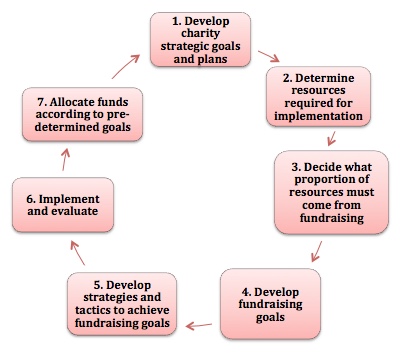When we start working with a new client, we often work on direct mail because that is a pressing need for the non-profit or charity.
When we begin talking to clients about fundraising strategy… this is NOT primarily about direct mail.
Although direct mail is a tactic used in the execution of a fundraising strategy, it’s not the strategy itself.
It’s not about taking a calendar of direct mail appeals and newsletters and calling that a strategy.
Developing a fundraising strategy is first about looking at your organisation’s strategic plan. Yes, the overall strategic plan. Not the fundraising strategic plan.
Judging by the “why do you need a copy of the strategic plan” looks I get when I ask for this, I have a grave suspicion. And that is…
Many non-profits are not linking their fundraising strategies to their organisational goals.
This is a BIG mistake.
Charities guilty of this error tend to be very focused on tactics like direct mail. They think they need a better letter. Or a better event. Or younger donors. Or a digital strategy.
Their process for developing so-called fundraising strategy looks like this.

I always want to look at your organisation’s strategic plan, because if I’m going to work with you on a fundraising strategy, we need to understand the following.
What is your organisation trying to achieve over the next 3-5 years?
What specific goals does your non-profit have?
What programs or projects do you want expand or start?
What infrastructure will you need to support these programs?
Exactly what does the non-profit need funding for?
Do you need one-off funding or ongoing income to survive?
It’s quite astonishing the blank stares and long silences I get when I ask these questions.
That’s before we even get to analysing your current giving data! (Which alas, is often patchy at best.)
And “As much as possible” is not a proper or reasonable answer to the question, “How much do you want to raise?”
Once you know the answers to these questions, we can then begin formulating fundraising goals. Those goals depend on what you need to achieve from fundraising.
The process would look more like this.

A fundraising consultant like me can start working with you at either Step 2, 3 or 4 depending on your charity’s situation.
Unfortunately, many charities want to start working at Step 5. But that’s not possible if you want the best outcome.
For example, if you want to start a new program, we need to look at whether your current donor base is likely to fund it. Can you fund it from untied income? Is it the type of project a major donor would fund? Or do you need to invest in acquisition to get enough new donors to support it?
If you’re going to invest heavily in a new building or equipment to help your beneficiaries, will you need a capital campaign? For how many years will it run?
If you’ve gone through a phase of expanding many programs, then you may be in a consolidation mode. Your fundraising goals may be related to ensuring you have stable, ongoing income for core services.
From this, you can see a lot of work needs to be done and decisions made before we can even look at tactics like direct mail.
And you can see from the examples listed that direct mail is likely to only be one part of the tactical picture.
So… don’t make the mistake of keeping your organisational goals separate to your fundraising strategy.
